Rabbits
Poultry
Laying hens
Quails
Guinea pigs
Pigs
Ostriches
Sheep and goats
Pigeons
Pheasants
Forest animals
Most frequent illnesses in domestic Rabbits
Rabbit breeding is still troubled by illness. Despite advances in science and research, despite the availability of information, improvements in feed produced and breeders’ practices, there are more and more health problems for breeders. The medical condition of rabbits is a factor limiting the prosperity and continued existence of a breeding colony.
For every illness there is a huge quantity of information available in literature and on the internet, but here we want to state the most important facts and, in particular, practical experience:
Myxomatosis
Origin and transmission: a very variable virus, transmission in particular by mosquito or other blood-sucking insects;
Occurrence: it affects rabbits of every age, at the earliest from the second month, linked to the occurrence of insects in the warmer months;
Incubation period: quite long, usually at least 7–9 days;
Symptoms and course: slow onset and very variable course – swelling of the eyelids, skin on the ears or in the genital area, progressively swelling of the head and whole body, sleepiness, lack of appetite, worsened breathing, discharge from the nose and possibly pneumonia – death within 14 days, sometimes only pneumonia without problems on the body surface. The virus interferes with immunity and previously hidden bacteria may come to light (Pasteurella). Losses can be very variable, for unvaccinated rabbits up to 100%.
Sometime the disease is not that serious – local inflammations on the skin on the head and ears in the place they were bitten by a mosquito, then spontaneous recovery with scars – sometimes for vaccinated rabbits with weaker immunity;
Treatment: untreatable, possible attempt with antibiotics in early stages if symptoms are mild;
Prevention: vaccination from 4 weeks of age, annual repetition, at times when there are lots of mosquitos it is a good idea to repeat vaccination after 4 months. After vaccination there could be a local reaction in the place of application.
Rabbit Hemorrhagic Disease – RHD 1 (Original)
Origin and transmission: A virus, transmission in particular on dust, i.e. all conceivable ways, including on the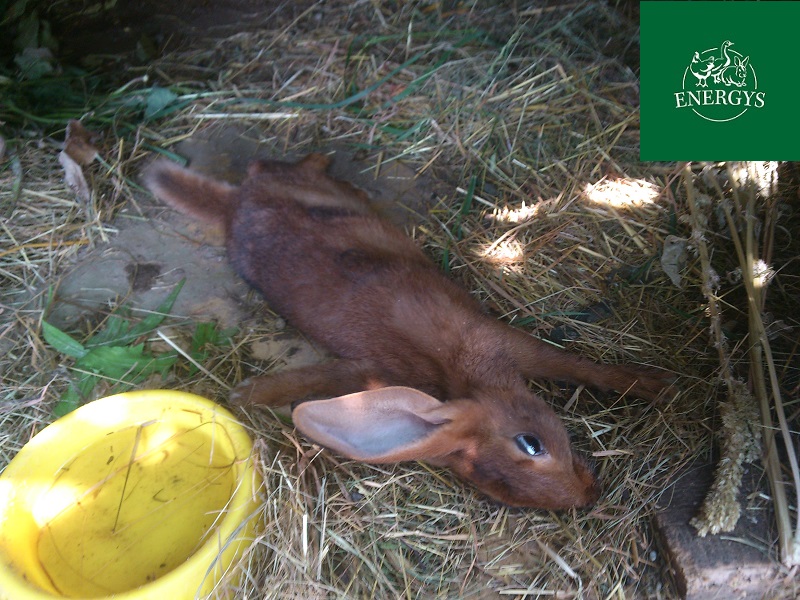 wind;
wind;
Occurrence: it affects, in particular, unvaccinated young rabbits up to 3 months of age;
Incubation period: very short – 2 to 3 days;
Symptoms and course: very fast, most frequently sudden death without previous symptoms, sometimes foam or blood in the nose, changes to the lungs, liver and other internal organs;
Treatment: untreatable, very high losses for young rabbits up to 100%;
Prevention: vaccination from 6 weeks of age, the optimum is in the 10th week – then immunity lasts for a year.
Rabbit Hemorrhagic Disease – RHD 2 (new – in the Czech Republic from 2017)
Origin and transmission: virus – mutation of the previous version, infection through all routes;
Incubation time: a little longer – 4 to 9 days;
Symptoms and course: young can be affected in the nest with the mother (not yet one month old), young breeding rabbits are often affected in their first year if vaccinated only against RHD 1 – losses can reach almost 100%.
Most frequently death without marked symptoms, usually a somewhat longer course – sometimes low-key sleepiness, lack of appetite or worsened breathing;
Treatment: untreatable, occasionally, however, the illness is chronic and weaker and the rabbit survives;
Prevention: vaccination from 4 weeks of age, under ordinary circumstances it has to be repeated after six months. The Biovety vaccine is available in the Czech Republic.
Note: Ordinary vaccines against RHD 1 practically do not provide protection against RHD 2.
Rabbit Encephalitozoonsis
Origin and transmission: a parasitic protozoan in the brain or kidneys (and other internal organs), transmission by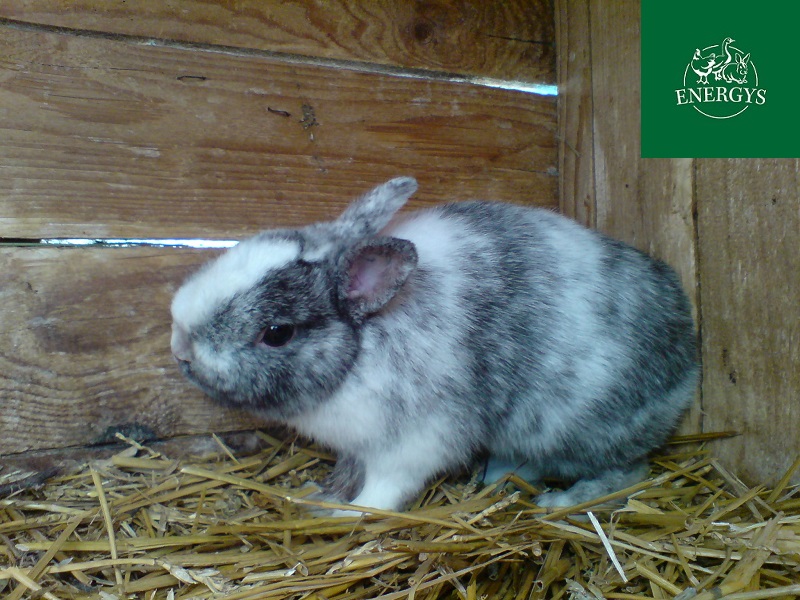 urine from the mother to offspring or in an infected hutch;
urine from the mother to offspring or in an infected hutch;
Occurrence: it affects primarily older rabbits, occurrence is usually not mass, more frequent for stunted rabbits;
Incubation period: variable – several months;
Symptoms and course: slow onset – turning of the head if the brain is affected, gradual turning of the whole body, in the case of older females, thirstiness and greater urine production;
Treatment: long application of an anti-parasitic (Fenbendazole for four weeks);
Prevention: limitation of contact with an affected rabbit or contaminated environment;
Note: theoretically transmissible to humans.
Rabbit Coccidiosis
Origin and transmission: Coccidia – several types in the stomach and a specific one in the liver, transmission by contaminated feed or bedding, transmission from the mother to the young;
Incubation period: variable, usually 7–10 days, influenced by the quality or composition of the feed dose (lack of fibre, excess of starch and protein)
Occurrence: it affects young rabbits from the second month of age, after weaning, in the case of weaned rabbits occasionally, young rabbits taking mother’s milk are resistant;
Symptoms and course: worsened nutritional state, sleepiness, lack of appetite, enlarged stomach, pain – audible teeth grinding, diarrhea with a characteristic smell, usually gradual worsening, possible complications in the case of a stomach bacterial infection, marked losses;
Treatment: treatable at the start – sulphonamides (the medicines are available on prescription), supplements and antibiotics are suitable;
Prevention: during weaning preventative treatment against coccidia, preventative treatment of breeding females, optimum composition of feed dose for young rabbits.
Spirochetosis – Rabbit Syphilis
Origin and transmission: bacteria living in the mucous membrane of male and female sex organs, transmission during mating, a mother may infect her young;
Incubation period: several weeks;
Occurrence: affects adult rabbits during the reproductive period;
Symptoms and course: swelling, reddening of the mucous membrane of the external sex organs, later scabs, possible extension to the area of the nose and labia, long course without limiting the life of a rabbit or reproduction;
Treatment: very simple and effective, general application of antibiotics;
Prevention: check on rabbits external sex organs before mating.
Pasteurellosis
Origin: most frequently Pasteurella bacteria (Pasteurella multocida) – present everywhere, the illness is influenced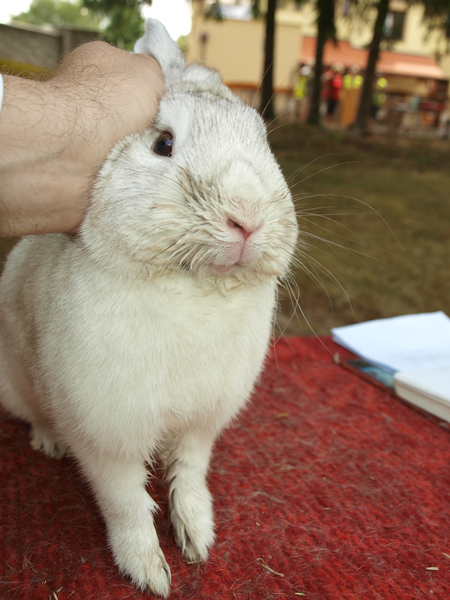 by the conditions in the breeding facility (damp, dust, draughts) and stress on the rabbit;
by the conditions in the breeding facility (damp, dust, draughts) and stress on the rabbit;
Occurrence: in rabbits of every age, the most resilient are young fed with their mother’s milk, frequently affects rabbits raised in a closed space;
Incubation period: very variable – several days;
Symptoms and course: watery to festering discharge from the nose – cold, in the case of widespread and neglected infection pneumonia with festering centres anywhere in the subcutis or organs;
Treatment: problematic, treatable at the start – antibiotics (the medicines are available on prescription), but hard to treat permanently, limited local treatment of a rabbit’s nose;
Prevention: vaccination possible, ensuring of optimum conditions in the hutch environment, limiting stress. Selection of resilient, healthy rabbits.
Trichophyton – fungal disease on rabbit’s skin
Origin and transmission: fungus (Trichophyton) on the skin’s surface, transmission by immediate contact, in an infectious environment, young may be infected by their mother;
Incubation period: several weeks;
Occurrence: in particular in rabbits reared in a closed space, in the case of increased humidity, it occurs after weaning;
Symptoms and course: rounded patches first on the head and ears, red and free of fur, gradually expanding over the body’s surface;
Treatment: complicated and expensive (antimycotics), most suitable to remove a rabbit early;
Prevention: checks on skin and fur of breeding rabbits, optimum environmental conditions;
Note: often transmissible to humans with unpleasant symptoms.
Ear mange
Origin and transmission: itch mites (Sarcoptes) living in the skin of a rabbit’s outer ear canal, transmission by direct contact, less probable indirect transmission in a contaminated hutch, infection can be passed from the mother to her offspring;
Incubation period: several weeks;
Occurrence: affects adult rabbits, occasionally young rabbits;
Symptoms and course: brown scabs in the outer ear canal, progressively spreading to the lower part of the inside of the external ear, occasionally also spreading to other parts of the head. The lesions usually do not itch,, so nothing is visible without a detailed examination of the ears. If the illness is neglected, the inner ear can become infected and there could be serious damage to a rabbit’s overall medical condition.
Treatment: very simple, general injection application of ivermectin, should be repeated in 14 days, local treatment with oil is also possible;
Prevention: regular checks on the ears, in particular for breeding rabbits.
Cheyletiellosis
Origin and transmission: mites (Cheyletia) on the surface of the skin and in the fur, transmission in particular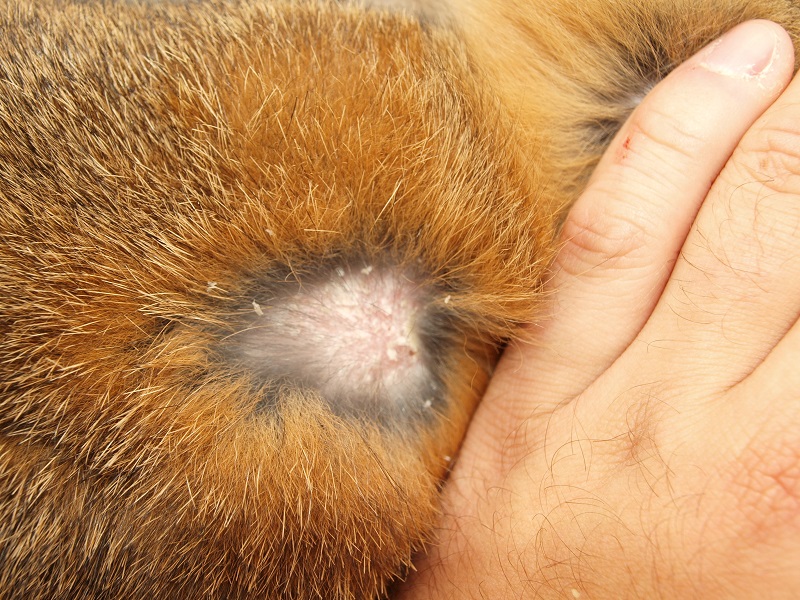 through direct contact;
through direct contact;
Occurrence: mostly in adult males, very occasionally in old females, very exceptionally in young rabbits, a problem for show rabbits, in particular;
Incubation period: several weeks;
Symptoms and course: loose fur in the nape of the neck and on the back with a large quantity of “dandruff”, does not itch;
Treatment: general repeated injection application of ivermectin, local treatment with an anti-parasitic is often not successful;
Prevention: check on the surface of the body, in particular the fur on the back of adult rabbits, preventative treatment with ivermectin.
Related posts
10. April 2024
Keeping dwarf rabbits as pets is becoming increasingly popular. It does not require a lot of space and is ideal for people who live in smaller homes or apartments. Dwarf rabbits are also very friendly, so it’s no wonder that people are choosing them for this purpose more and more often. As with all animals,…
30. August 2022
In this article we will discuss several rabbit diseases – ear scab, tyzzer’s disease and heat stress.
24. August 2022
In this article we look at two diseases – e.Coli and enterocolitis.
2. August 2022
In this article we look at two common rabbit diseases, myxomatosis and infectious rhinitis.
13. July 2022
In the following article we will discuss rabbit plague – rhd or vhd (viral haemorrhagic disease of rabbits).
Related products
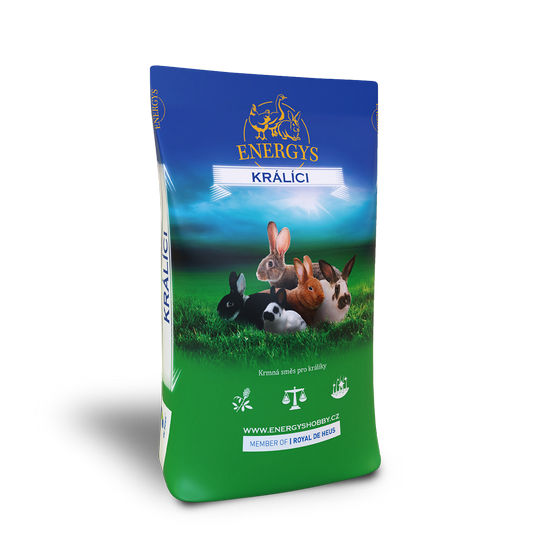
RABBIT DWART
Complete pelleted feed for dwarf rabbits with high digestibility. It contains a high proportion of fibre (high alfalfa and grass cake content) and a reduced sugar and starch content. Contains flaxseed, which has a positive effect on coat quality. Suitable for daily feeding. We recommend providing rabbits with safe fresh water and hay.

RABBIT CHAMPION
Feed for show rabbits, does not include Coccidiostat. A unique mix significantly supports the quality and growth of fur. Serve when moulting and at least two months before the start of the show season.

RABBIT GOLD FORTE
A premium feed mix in an ideal make up for gestating and breast feeding females. For the intensive fattening of rabbits for a period of up to 5 days before slaughter. It supports fast growth, meat content and an excellent state of health. It contains a coccidiostat which lowers the risk of mortality.

RABBIT KLASIK FORTE
Intended for the fattening of rabbits up to a point at least 5 days before slaughter. Suitable for attaining a high meat content and an excellent state of health. Thanks to its Coccidiostat content it lowers the animals mortality.

RABBIT KLASIK
For the final phase of rabbit fattening, a minimum of 5 days before slaughter. It supports high meat content and excellent taste qualities in rabbit meat. Without a coccidiostat.

RABBIT START
For young rabbits from the start of accepting feed to 4-6 weeks after weaning. The feed helps to significantly lower the death rate in the period around weaning. It contains a raised percentage of fibre and less starch. It does not contain a coccidiostat.
